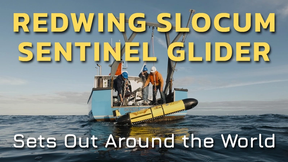Atmocean and The Potential of Wave Energy - Part 1
Water covers 71% of our world and holds a vast potential for clean renewable energy production. The American Society of Mechanical Engineers estimated in a 2010 report of Offshore Mechanics and Arctic Engineering, that there is an estimated potential of 3.7 terawatts of wave energy, almost double that of current world electrical consumption, yet although it may never be possible to harvest all this energy, very little of it has been harvested up to now. Waves are mainly created by winds blowing across the oceans. Waves are distinct from daily tidal surges created by the gravitational effects of the moon as the earth spins on its axis. Compared to wind and sun, waves are more consistent and predictable and as water is roughly 1000 times denser than air, it makes potential transmission into renewable energy very efficient. With roughly 60% of the world population living within 50 miles of a coastline, wave power can be locally delivered, reducing energy loss to transmission across long distances. Additionally, as power demands increase during colder winter months, wave energy generation mirrors that demand with increased wave activity.
Numerous projects are working towards ways to tap into this pool of energy with mix results. Since 2005, Atmocean has conducted 59 days of ocean testing in Texas, Bermuda, Hawaii, California, and Oregon; three years of analysis by Sandia National Laboratories; six days of wave tank testing at Plymouth University (UK) state-of-the-art wave tank; all of which has helped them to develop the technology and generate the blue prints ready to go into production. With the models, pilot studies, and tests done, all that is left is manufacturing of the array and deployment, which will happen in the spring of 2015 off the coast of Peru. Atmocean’s Peruvian pilot array acts two fold by generating clean energy, while also competing directly with fossil fuels sourced from the Peruvian Amazon basin. With exposure to steady waves originating from Antarctica, Peru’s coastline is ideal for the Atmocean technology. The Atmocean wave energy system is unique in that each array of fifteen seawater pumps located up to 2 miles offshore produces pressurized water transmitted in a seafloor hose to the onshore turbine operating a generator. With all the electrical equipment onshore, this design is very low cost – under $1 million per megawatt of rated capacity – and thus is economic even without government subsidies, delivering electricity as low as 6 cents per kilo-Watt-hour (kWh).



















 August 2025
August 2025



